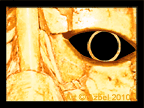
El Popol Vuh de los mayas es uno de los más antiguos y más completos textos literarios precolombinos en sobrevivir a la conquista española. El texto ha sido traducido más de 82 veces, en Europa, y Asía. Su poesía ha sido elegante en comparación con la Ilíada y la Odisea de Grecia o el Ramayana de la India. Lo que comúnmente se conoce como la "Biblia" Maya y la analogía es bien merecida, ya que es demostrativo de un texto antiguo del período Preclásico.
El texto se ha convertido en un recurso valioso en la comprensión de la antigua cosmología Maya (mito y religión), y ofrece una ventana al alma de los antiguos mayas, dándonos una idea de sus valores, costumbres y creencias.
Este simposio celebra el Popol Vuh y la inspiración que el texto ha sido para estudiosos en el tema.
Presentadores: Gerardo Aldana, Jaime Awe, Bell Ellen, Oswaldo Chinchilla, Christenson Allen, David Freidel, Guernsey Julia, Henne Nathan, MacLeod Barbara, Holley Moyes, y Dorie Reents-Budet
Universidad de California Merced
Marzo 2 del 2012 - Marzo 3 del 2012
Abierto al público























































































































































































































